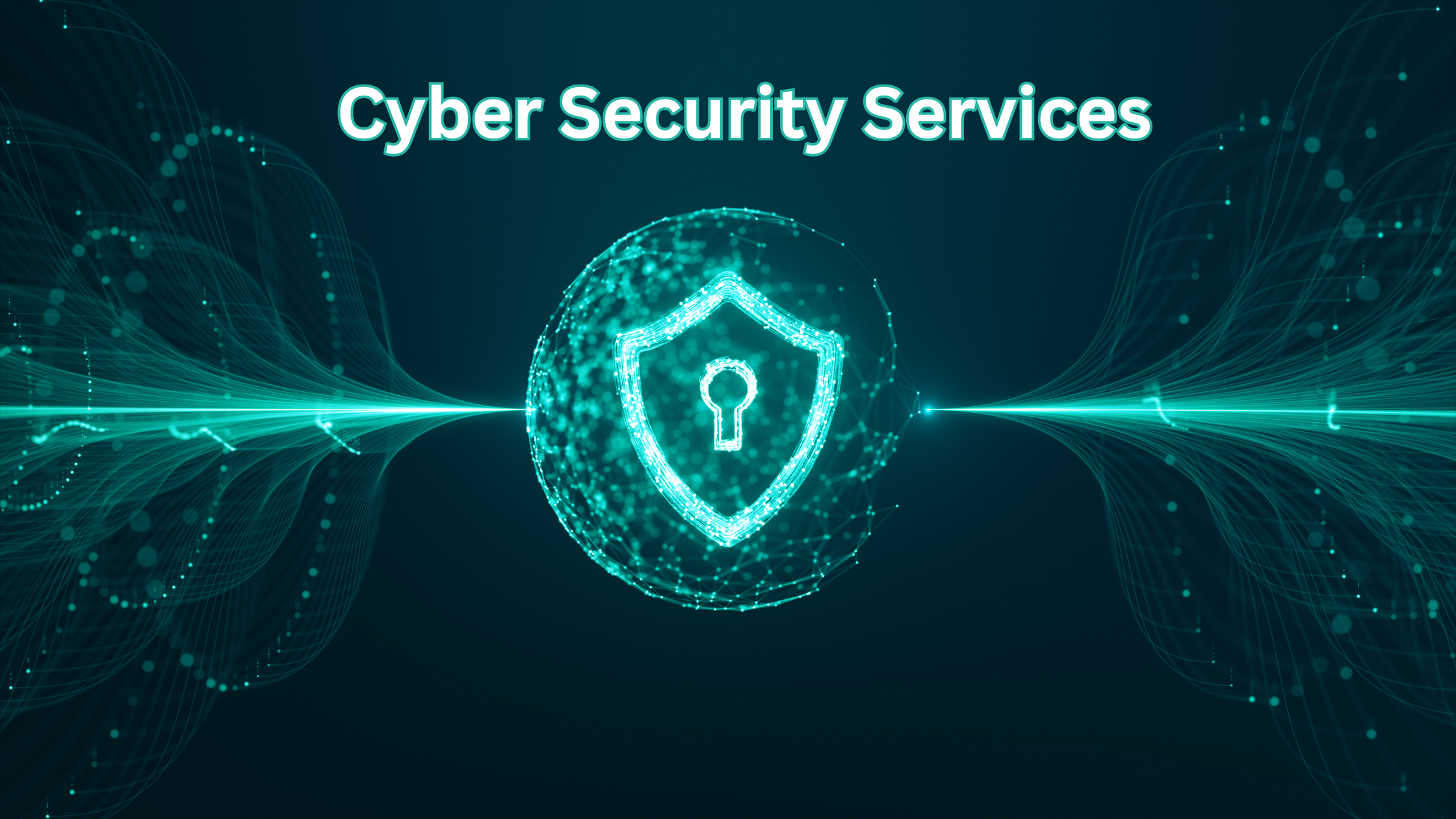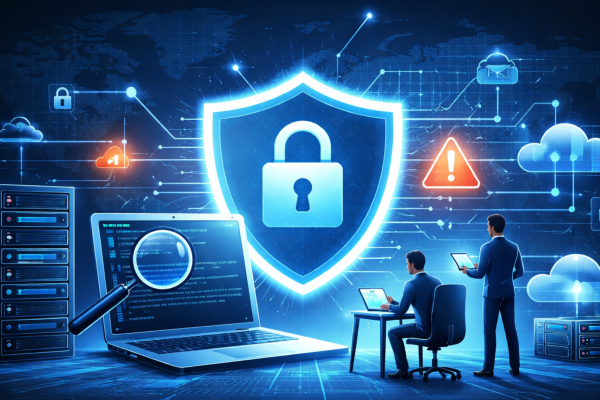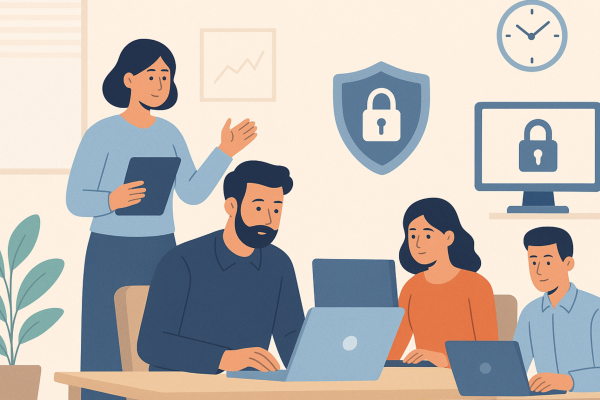Protect Your Digital World: Advanced Cyber Security Services
In today’s digital age, the importance of Cyber Security Services cannot be overstated. As businesses and individuals increasingly rely on the internet for everything from banking to communication, the need for robust cyber security measures has become crucial. Cyber security services are designed to protect systems, networks, and data from cyber threats such as hacking, phishing, and malware. This blog will explore the various aspects of cyber security services, their importance, and how they can help safeguard your digital presence.
What Are Cyber Security Services?
Cyber security services encompass a range of practices, technologies, and processes aimed at protecting computer systems, networks, and data from cyber attacks. These services are essential for preventing unauthorized access, data breaches, and other cyber threats. The main objective of cyber security services is to maintain the confidentiality, integrity, and availability of information.
Types of Cyber Security Services
1. Network Security
Network security involves protecting the integrity, confidentiality, and accessibility of networks and data. This includes:
- Firewalls: These act as barriers between your trusted internal network and untrusted external networks. Firewalls oversee and regulate incoming and outgoing network traffic according to established security rules..
- Intrusion Detection Systems (IDS): IDS tools monitor network traffic for suspicious activity and potential threats. They can alert administrators to potential breaches in real time.
- Virtual Private Networks (VPNs): VPNs create a secure connection over the internet, ensuring that data transmitted between your device and the network is encrypted and protected from eavesdropping.
2. Endpoint Security
Endpoints, such as laptops, smartphones, and tablets, are often targeted by cybercriminals. Endpoint security focuses on securing these devices from threats. Common endpoint security measures include:
- Antivirus Software: This software detects and removes malicious software from your device.
- Endpoint Detection and Response (EDR): EDR solutions continuously monitor endpoint activities and provide real-time detection and response to potential threats.
- Mobile Device Management (MDM): MDM tools allow organizations to manage and secure mobile devices used by employees, ensuring compliance with security policies.
3. Application Security
Application security focuses on safeguarding software applications from cyber threats. This includes:
- Web Application Firewalls (WAF): WAFs protect web applications by filtering and monitoring HTTP traffic between a web application and the internet.
- Secure Coding Practices: Developers follow secure coding practices to minimize vulnerabilities in software applications.
- Application Security Testing: This involves various testing methods, such as static application security testing (SAST) and dynamic application security testing (DAST), to identify and fix security vulnerabilities in applications.
4. Cloud Security
As more businesses move to the cloud, ensuring the security of cloud environments has become essential. Cloud security services include:
- Cloud Access Security Brokers (CASBs): CASBs offer visibility and control over data and applications in the cloud.
- Encryption: Encrypting data stored in the cloud ensures that even if it is accessed by unauthorized individuals, it remains unreadable.
- Identity and Access Management (IAM): IAM tools manage user identities and control access to cloud resources.
5. Identity and Access Management (IAM)
IAM services help organizations manage user identities and control access to critical resources. Key components of IAM include:
- Single Sign-On (SSO): SSO enables users to access multiple applications using a single set of login credentials.
- Multi-Factor Authentication (MFA): MFA enhances security by requiring users to provide two or more verification factors to access an account.
- Role-Based Access Control (RBAC): RBAC restricts access to systems and data based on users’ roles within an organization.
6. Data Security
Data security services focus on protecting sensitive data from unauthorized access and breaches. This includes:
- Data Encryption: Encrypting data ensures that only authorized parties can read it.
- Data Loss Prevention (DLP): DLP solutions monitor and protect sensitive data from being lost, stolen, or misused.
- Database Security: This involves securing databases against threats, ensuring the integrity and confidentiality of stored data.
7. Security Information and Event Management (SIEM)
SIEM systems gather and analyze security data from multiple sources to identify and respond to potential threats.. Key features of SIEM include:
- Log Management: Collecting and analyzing logs from different systems to identify suspicious activities.
- Threat Detection: Identifying potential threats based on patterns and anomalies in the collected data.
- Incident Response: Automating responses to detected threats, such as alerting administrators or blocking malicious activities.
Importance of Cyber Security Services
1. Protection Against Cyber Threats
The primary reason for implementing cyber security services is to protect against cyber threats. With the increasing sophistication of cyber attacks, organizations must be vigilant and proactive in defending their digital assets.
2. Data Protection
Data breaches can have severe consequences, including financial loss, reputational damage, and legal penalties. Cyber security services help protect sensitive data from unauthorized access and breaches.
3. Compliance with Regulations
Many industries must adhere to stringent regulations concerning data protection and privacy. Cyber security services help organizations comply with these regulations, avoiding potential fines and legal issues.
4. Maintaining Business Continuity
Cyber attacks can interrupt business operations, causing downtime and financial losses.By implementing robust cyber security measures, organizations can ensure business continuity and minimize the impact of potential attacks.
5. Building Trust with Customers
Customers expect their personal information to be protected. By investing in cyber security services, businesses can build trust with their customers and demonstrate their commitment to safeguarding sensitive data.
Choosing the Right Cyber Security Services
When selecting cyber security services, consider the following factors:
1. Assess Your Needs
Identify the specific cyber security needs of your organization. This includes understanding the types of data you need to protect, the potential threats you face, and any regulatory requirements you must comply with.
2. Evaluate Service Providers
Research and evaluate different cyber security service providers. Look for providers with a proven track record, positive customer reviews, and a comprehensive range of services.
3. Consider Your Budget
While it’s essential to invest in cyber security, it’s also important to consider your budget. Look for services that offer a good balance between cost and effectiveness.
4. Scalability
Choose cyber security services that can scale with your organization. As your business grows, your cyber security needs will evolve, and you need services that can adapt to these changes.
5. Integration
Ensure that the cyber security services you choose can integrate seamlessly with your existing systems and processes. This will help minimize disruptions and ensure a smooth implementation.
Future Trends in Cyber Security Services
The field of cyber security is continually evolving, with new trends and technologies emerging to address the ever-changing threat landscape. Some future trends to watch include:
1. Artificial Intelligence and Machine Learning
AI and machine learning are becoming increasingly important in cyber security. These technologies can help detect and respond to threats faster and more accurately than traditional methods.
2. Zero Trust Security
The Zero Trust model assumes that threats can come from both outside and inside the network. It emphasizes strict identity verification and access controls, ensuring that only authorized users can access sensitive data and systems.
3. Advanced Threat Detection
Advanced threat detection techniques, such as behavioral analysis and threat intelligence, are being used to identify and mitigate sophisticated cyber threats.
4. IoT Security
As the Internet of Things (IoT) continues to grow, securing IoT devices and networks is becoming increasingly important. Cyber security services are evolving to address the unique challenges posed by IoT.
5. Cloud-Native Security
With the rise of cloud computing, cloud-native security solutions are becoming more prevalent. These solutions are designed to protect cloud environments and ensure the security of cloud-based applications and data.
Conclusion
In conclusion, cyber security services are essential for protecting your digital assets from a wide range of cyber threats. By understanding the different types of services available and their importance, you can make informed decisions about how to safeguard your systems, networks, and data. As the cyber threat landscape continues to evolve, staying up-to-date with the latest trends and technologies in cyber security will help you stay one step ahead of potential attackers. Investing in robust cyber security services not only protects your organization but also builds trust with your customers and ensures the continuity of your business operations.
Author







